Millions of us enjoy a hobby at home whether it be crafting, cooking or another creative pursuit. You may have even transformed your hobby into a business, in which case a dedicated space to work is a real advantage.
At Redrow we have a range of brand new three-bedroom homes, four-bedroom homes and five-bedroom homes, with plenty of flexible living space to adapt to your needs. Right-sizing your home does not always mean downsizing the number of rooms – it could mean purchasing a home with a layout that better suits your needs or an extra room where you can indulge in your favourite pastime. In this article, our in-house interior designer, Alysha Alli offers her expert design advice for your hobby or playroom.
What are the benefits of a hobby room?
2024 research by Adobe Express looked at the top hobbies enjoyed by Brits. While walking and solo & team sports generally take people out of the home, seven of the top 10 were pastimes we can all enjoy at home, with reading, baking / cooking, playing an instrument, journaling / writing, art / illustration and needle crafts all included. Other studies have shown that having a hobby or interest can have a positive effect on our overall happiness.
Four things to consider when designing a reading room
According to the research, reading is the number one hobby Brits like to indulge in. Having a quiet space at home for reading can double up as a place to relax and decompress from busy daily life. It doesn’t need to be a whole room, a bay or corner of the lounge or bedroom can still become your tranquil reading haven.
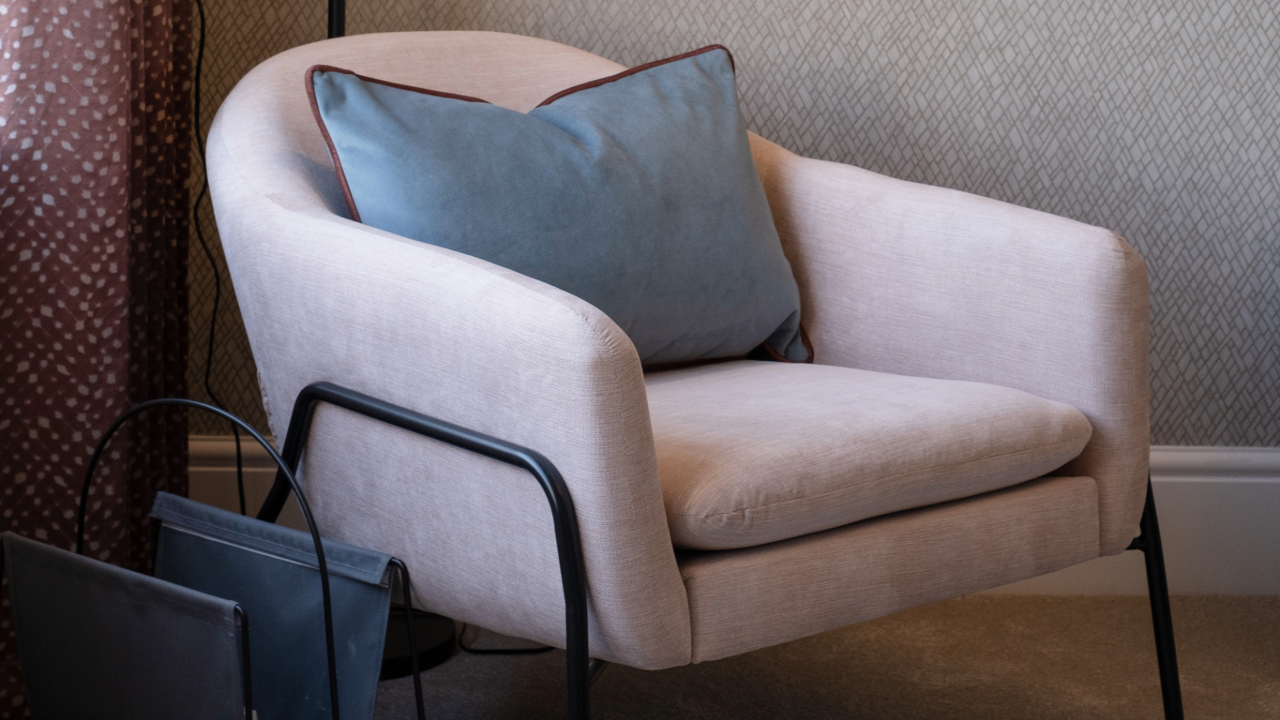
- Plan a comfortable place to read. Alysha advised: “You could choose a sofa with a footstool, occasional chair, or even a chaise lounge. But choose wisely, so that it gives you enough support to sit comfortably for longer periods of time for when you simply can’t put your book down.”
- Create a library style bookcase wall. Bespoke bookcases or shelving can be designed to fit your space perfectly and there are even flat pack shelving systems that can be configured to your individual specifications. Alysha said: “Deep shelving can amplify your home storage options too and double up as a space to store other possessions. Add linen or wicker baskets to tidy away smaller items, while giving your treasured books pride of place.”
- Encourage creativity and imagination through colour and inspiring artwork. Books can take your mind to places beyond your four walls, so your walls ideally be as imaginative as the stories on the pages you’re reading. Alysha suggests adding artwork of your favourite landscapes or cityscapes and blending these with galleries of family photographs to personalise your space. She added: “Blocks of painted colour or whimsical wallpaper can give your room a very different mood – why not read up on the colour trends for 2025 and chose an inspiring tone.”
- If you have children or grandchildren, a quiet and calm space can really encourage them to focus, whether for learning or pleasure. Create a reading space in your home to suit them, perhaps with children’s books at a lower level in the bookcase, a smaller child-friendly reading chair or bean bag and lots of comfortable cushions. For more ideas on creating a room where children and adults can focus, read our flexible study space ideas to create the ideal dual purpose space for co-working and homework.
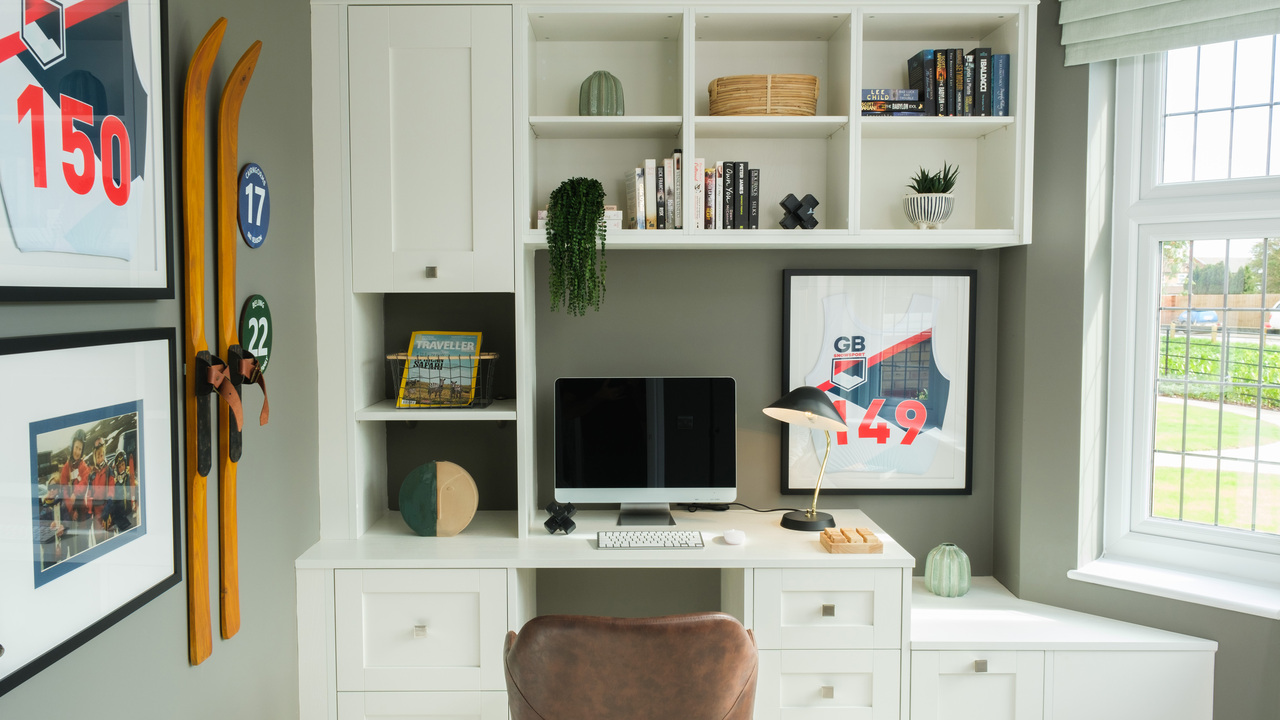
Four ideas for an arts and crafts room
Art, drawing and illustration, and knitting, sewing and crocheting were grouped together as two of our top hobbies. If your hobby is arts and crafts there are a few considerations when creating your ideal space to get creative.
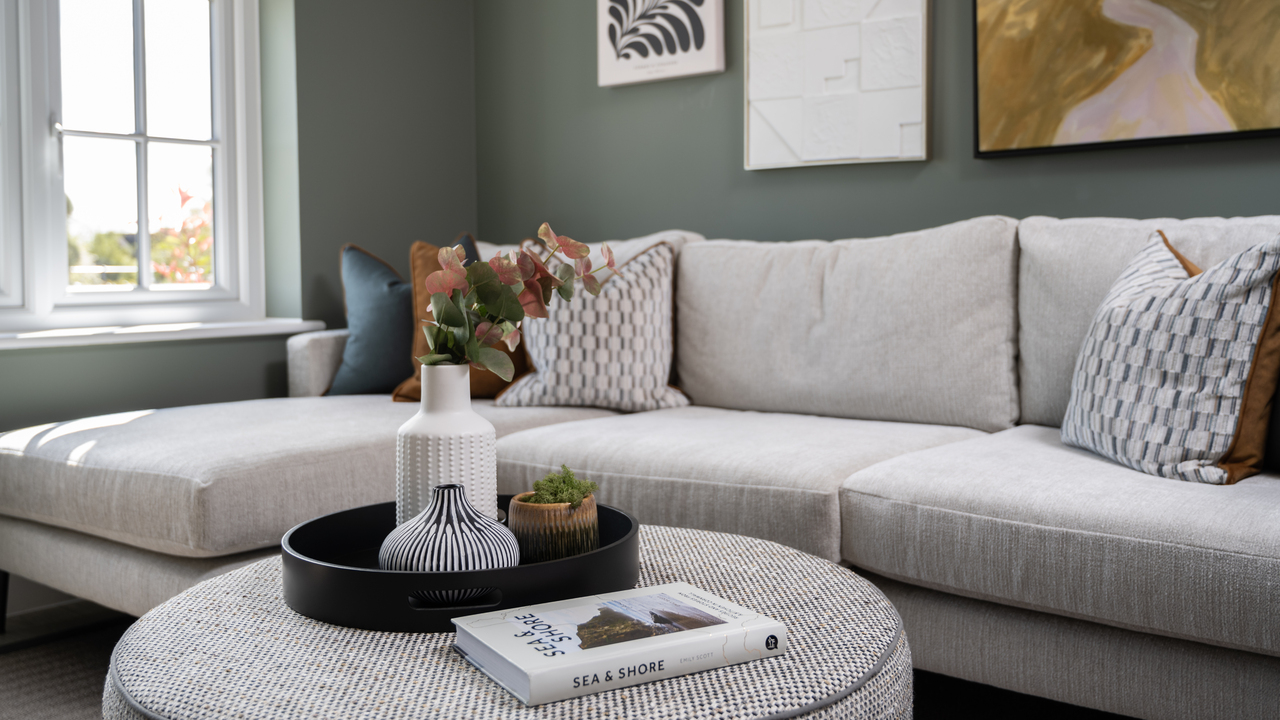
- Space to work – A large desk or table will be required to give you ample space to spread out and work surface to organise your tools. Or if you’re working on an easel, it’s a good idea to position it close to a window. A north facing room can give a more consistent light throughout the day and avoid direct sunlight shining onto your artwork.
- Good lighting – While all Redrow homes make the most of the natural light, the amount of sunlight can be dependent on the orientation of the room, the weather and the time of day. Alysha said: “A well-lit workspace can make all the difference in your hobby room, particularly if your main opportunity for creativity is in the evenings. An angle poise light is great for a desk or if you’re working on intricate detailing in a sewing room, while a more natural light, like white spotlights, may be best if you’re using it as an art studio for painting.” For more lighting inspiration see our top lighting trends for 2025.
- Clever storage – Most hobbies, particularly needle crafts and artistic activities, can come with a lot of kit or hobby equipment. Alysha explained: “There are some ingenious storage solutions available from peg boards for cotton reels to clear tubes for wool. You can gain more space by going vertical with your storage – think overhead hanging hooks where items can be placed above workspace. There is an ever-increasing array of cupboard and drawer organisers available to buy from craft stores on online marketplaces or you could get create and repurpose jars, cosmetics boxes, tubs and even ice cube trays for your needs. A wine racks doubles as creative storage for wool, or why not use tea caddies or plant pots to hold your paint brushes.”
- Inspiring colours – Greens and blues are known for their relaxing qualities but as well as creating a sense of calm, they can nurture positivity and productivity. Bright yellows such as Dulux Colour of the Year True Joy – are known to enhance creativity while also providing a mood and energy boost.
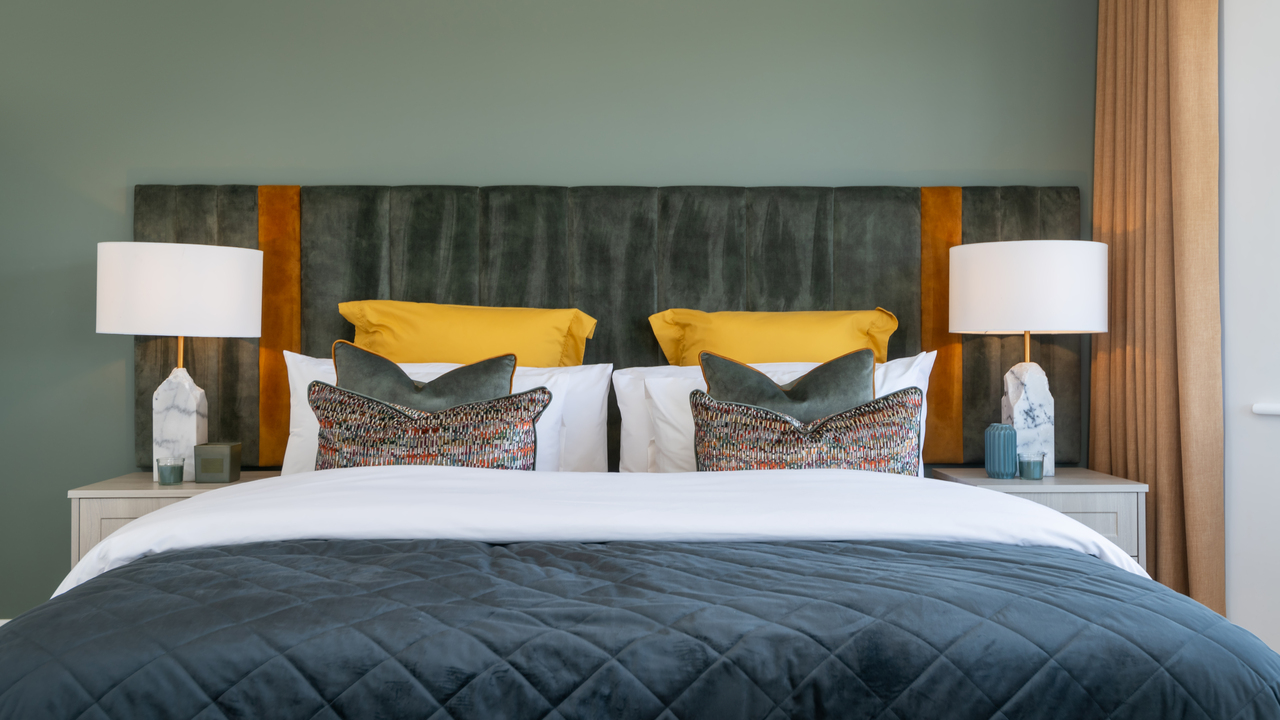
Tips to create a dream playroom
While hobby rooms can be great for sharing pastimes with the whole family, younger children tend to be more focussed on free play – and great playroom design can help them to explore and express themselves through play. Our playmaking campaign has been encouraging children to get outside to play but imaginary play in the home can be just as important for their development.
Five ideas for your perfect play space
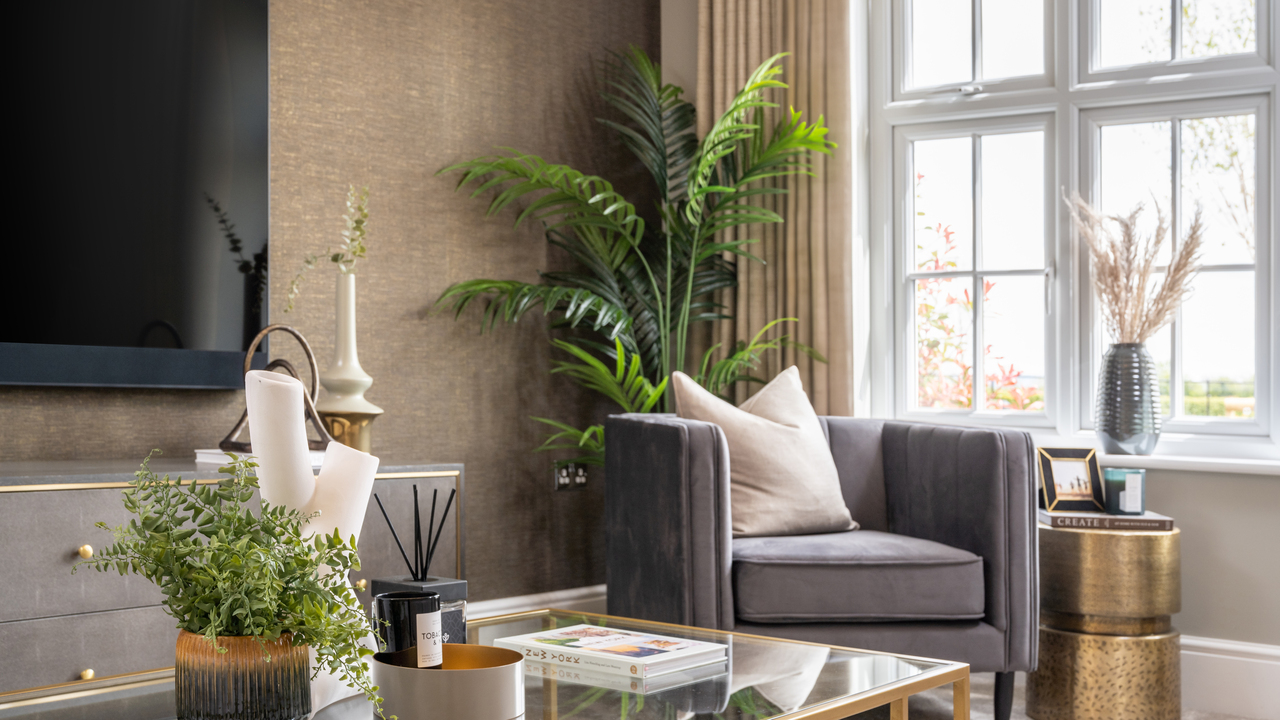
- Create exciting places that inspire imaginary play. Paint the walls to zone different imaginary destinations, from bright shop fronts to a striped café canopy or Post Office sign. If painting isn’t your strong point, you can opt for readymade stencils or wallpaper. New mum Alysha suggested: “Consider a whimsical print wallpaper in a playroom that can fuel their imagination with themes around fairytales and adventures. Let your childlike creativity run wild to create spaces and places children will love to imagine themselves in.”
- Invest in clever and durable storage. While intricate drawer organisers are great for a hobby room, it’s better to invest in larger and more robust boxes, baskets and chests for a playroom. Softer storage like linen baskets are great for soft toys. Alysha said: “It’s not always necessary to buy new – as new does not always last. You can often find some of the most durable storage in vintage shops. If a suitcase or blanket box has stood the test of time, you can almost guarantee it will survive the rough and tumble of a play room. The added bonus of buying vintage boxes and chests is children can imagine they are travelling the globe or through time or finding pirate treasure inside.”
- Use colours and textures that encourage learning and wellbeing. Nature is still a strong trend in interior design for 2025. Alysha said: “Vibrant greens and blues are on trend and make a great backdrop for a playroom. Adding elements of natural greenery like small succulents or trailing plants on higher shelving, out of reach, can enhance this. Organic textures such as thick cottons or soft fabrics like boucle will all ensure your playful offers fun and comfort in equal measure.” Read our fabric first construction approach.
- Make tidying up fun. The playroom is one place in your home where being neat and orderly does not need to take priority, at least until the end of the day. But tidying up after yourself is an important lesson for children to learn – and one made easier to teach if you can make it fun. If your children like colour-coding items – then invest in coloured storage to house toys to match. “This works really well for things like building blocks and Lego,” said Alysha. “Labels on boxes with pictures can show children what goes in each one, while helping them to remember where toys are when its next time to play. Or why not set a countdown clock in the form of a sand timer so children have to beat the sand as they tidy away their games.”
- Make the space personal to your children. Give them free reign on some aspects of your playroom décor. Let them choose the colour or pick out artwork. Or add frames where they can display their own paintings and sketches. Children love to see their own names written out, whether it be stencilled onto personal items like a wooden chair to sit and craft or in the form of alphabet magnets on a chalkboard wall. Giving them ownership of certain design elements will foster a sense of pride in the space.

For more advice on styling interiors for younger members of the family see our children's bedroom ideas that will grow with them.
And if you’re looking for a space that’s more work than play read our flexible study space ideas create the ideal dual purpose space for co-working and homework.
Create your perfect kitchen for cooking and baking
If you love cooking then your open-plan Redrow kitchen is the likely space you’ll want to focus your interior design efforts – as it’s where you’ll spend most of your time. Here are four things to help you design a space to get your culinary creativity flowing.
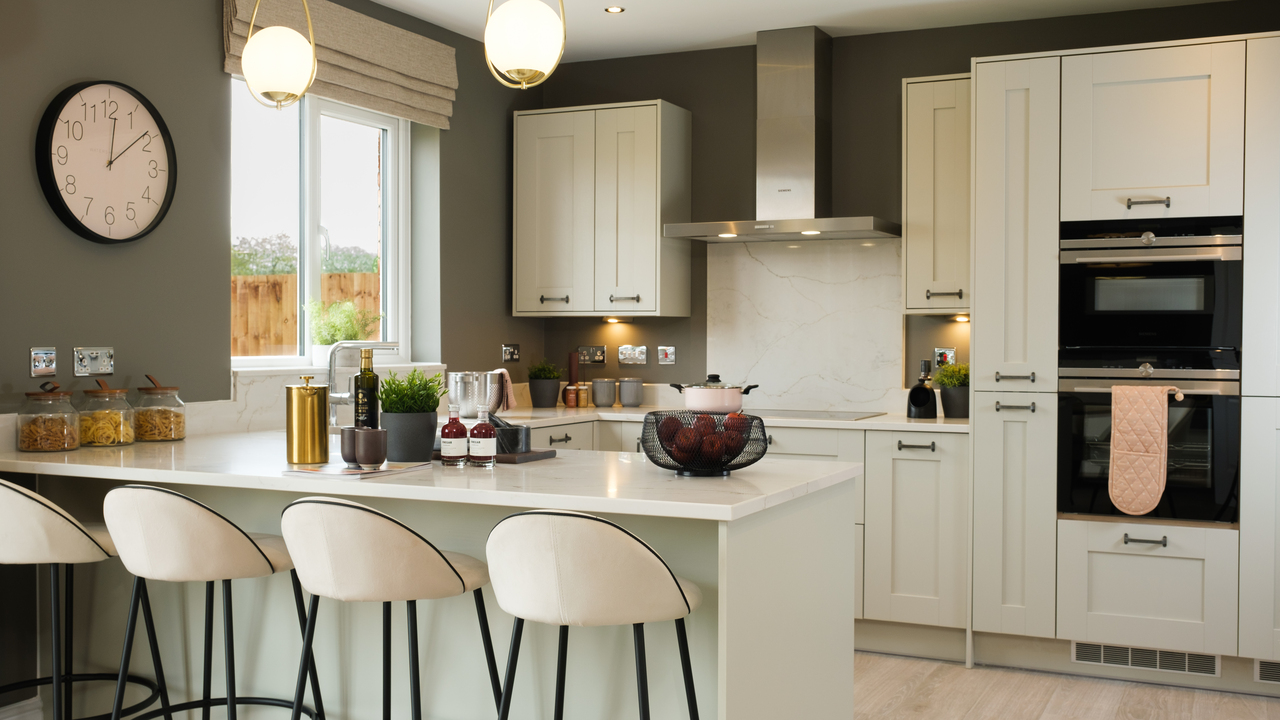
- The Redrow Kitchen Visualiser tool, available in our customer experience suites, will help you to create your perfect kitchen combination, and decide which worktops and flooring to pair with which cabinets. You can also add things like extra lighting or sockets and USB ports where counter top appliances will be placed.
- Define your space with a kitchen island or breakfast bar. Alysha explained: “Both are brilliant options to provide home cooks with additional work surfaces to whip up their culinary creations. They also have the added benefit of zoning your space and creating clear distinction between the kitchen and dining areas.”
- Invest in quality over quantity and display your kitchen accessories and gadgets with pride. A kitchen mixer is a bulky item so consider keeping it on show on your counter or kitchen island. It’s also a good idea to buy a quality recipe stand – which can work with both books or devices like your iPad or tablet.
- Utilise your utility to store extra cookery items. If you have the added convenience of a utility room, like in one of our Cambridge or Oxford house types – Alysha loves to style them with wooden or metal framed shelves, hanging racks and hooks and stackable storage. She added: “Clear decanters and jars can show you at a glance when you’re running low on ingredients. Committed bakers or those who bake professionally may also benefit from extra fridge or freezer space, with chest freezers the ideal addition.”
Read more of our kitchen storage hacks and cleaning tips.
How do you organise a hobby room or playroom?
When you’re passionate about a hobby or play, we can occasionally accumulate more belongings than we can comfortably fit in our homes. That’s why regular decluttering is vital.
Certainly for children, who will outgrow certain toys more quickly than others, a bi-annual declutter of toys is wise. If it’s not been used or played with more than a handful of times or not at all in the last year, it may be time to say goodbye.
Decluttering a few weeks before a birthday or Christmas is often a good place to start. Most charity shops will take bric-a-brac and toy donations or you could hand them down to a neighbour or donate to your local nursery school. If you have any new or nearly new toys, you may be able to donate them to a toy appeal or local children’s charity or a foodbank, particularly in the run up to Christmas.
Read more about decluttering and home organising tips from an expert.



